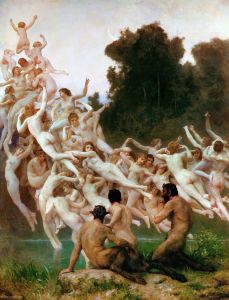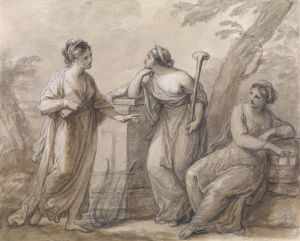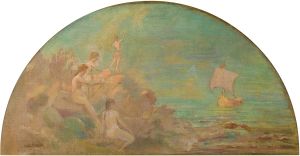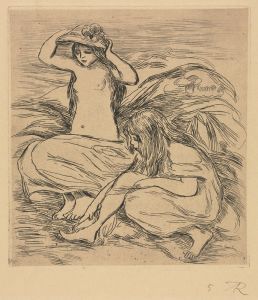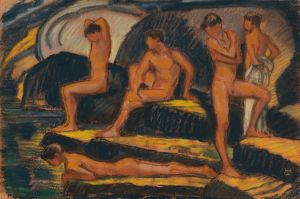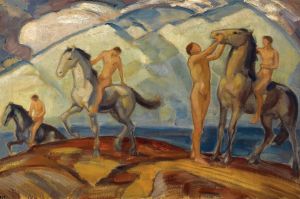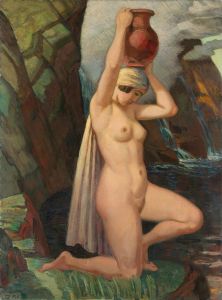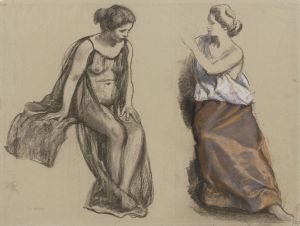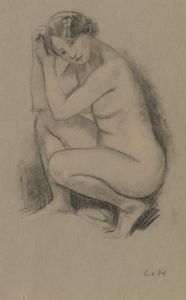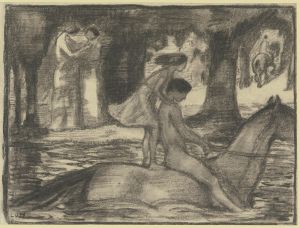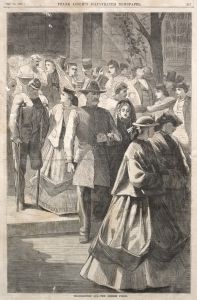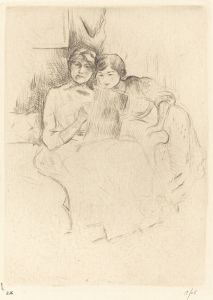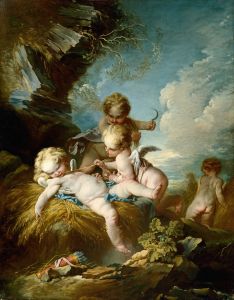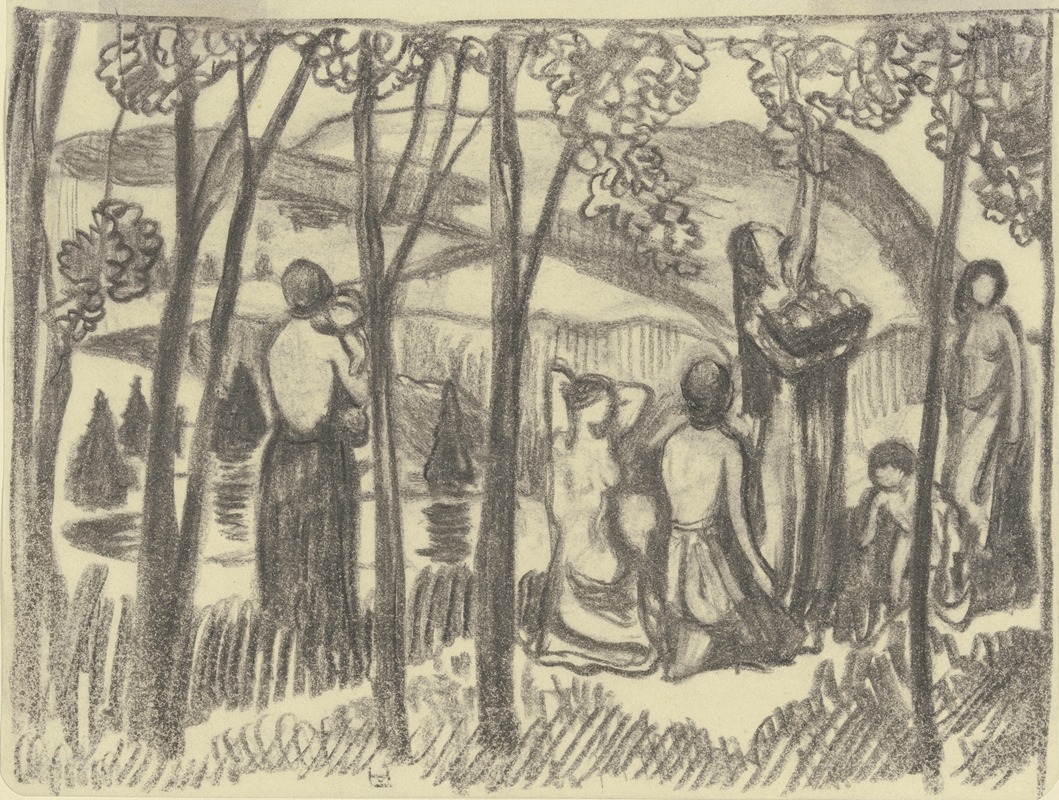
Kniende Frauen und Obstflückerin
A hand-painted replica of Ludwig von Hofmann’s masterpiece Kniende Frauen und Obstflückerin, meticulously crafted by professional artists to capture the true essence of the original. Each piece is created with museum-quality canvas and rare mineral pigments, carefully painted by experienced artists with delicate brushstrokes and rich, layered colors to perfectly recreate the texture of the original artwork. Unlike machine-printed reproductions, this hand-painted version brings the painting to life, infused with the artist’s emotions and skill in every stroke. Whether for personal collection or home decoration, it instantly elevates the artistic atmosphere of any space.
Ludwig von Hofmann was a prominent German painter and graphic artist associated with the Jugendstil movement, which is the German counterpart of Art Nouveau. His works often explore themes of beauty, nature, and the human form, reflecting the idealism and aesthetic values of his time. One of his notable works is "Kniende Frauen und Obstflückerin" (Kneeling Women and Fruit Picker), which exemplifies his artistic style and thematic focus.
"Kniende Frauen und Obstflückerin" is a painting that captures the essence of Hofmann's fascination with the idyllic and harmonious interaction between humans and nature. The painting features a group of women engaged in the act of picking fruit, a scene that is both pastoral and serene. The composition is characterized by its graceful figures and the fluidity of their movements, which are hallmarks of Hofmann's style. The women are depicted in a kneeling position, suggesting a sense of humility and reverence towards nature. This portrayal aligns with the Jugendstil movement's emphasis on the unity of humans with the natural world.
Hofmann's use of color in this painting is particularly noteworthy. He employs a palette that is both vibrant and harmonious, with soft, muted tones that evoke a sense of tranquility. The colors are carefully balanced to create a cohesive and aesthetically pleasing composition. This attention to color and form reflects Hofmann's training and influences, which include the Symbolist movement and the works of other contemporary artists who sought to transcend realism in favor of more expressive and symbolic representations.
The setting of the painting is an idealized natural landscape, which serves as a backdrop for the figures. This setting is typical of Hofmann's work, as he often depicted scenes that celebrate the beauty and purity of nature. The landscape in "Kniende Frauen und Obstflückerin" is lush and abundant, reinforcing the theme of fertility and the bountifulness of the natural world. The fruit-picking activity further emphasizes this theme, symbolizing the connection between humans and the earth's resources.
Hofmann's work, including "Kniende Frauen und Obstflückerin," was well-received during his lifetime and contributed to his reputation as a leading figure in the Jugendstil movement. His paintings were exhibited in various art shows and were influential in shaping the aesthetic direction of early 20th-century German art. Hofmann's legacy is marked by his ability to blend classical ideals with modernist tendencies, creating works that are both timeless and reflective of the cultural currents of his era.
In summary, "Kniende Frauen und Obstflückerin" by Ludwig von Hofmann is a significant example of Jugendstil art, showcasing the artist's skill in depicting harmonious interactions between humans and nature. Through its elegant composition, thoughtful use of color, and thematic depth, the painting captures the essence of an idealized world where beauty and nature coexist in perfect harmony.





